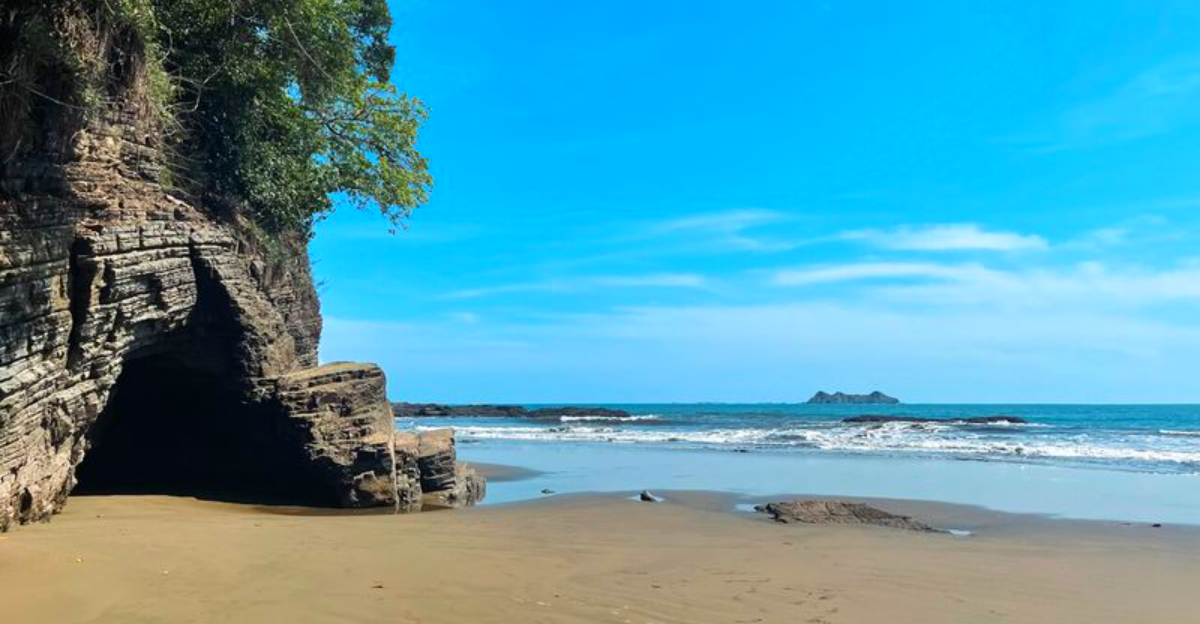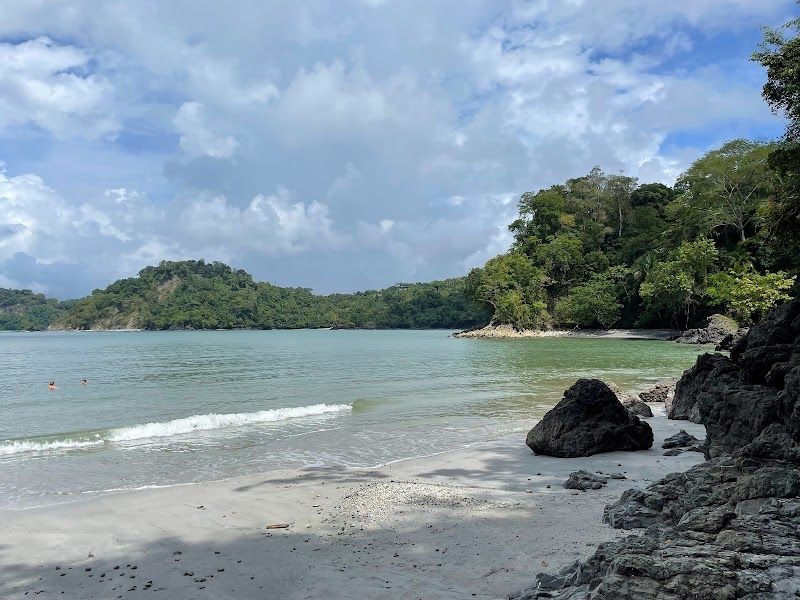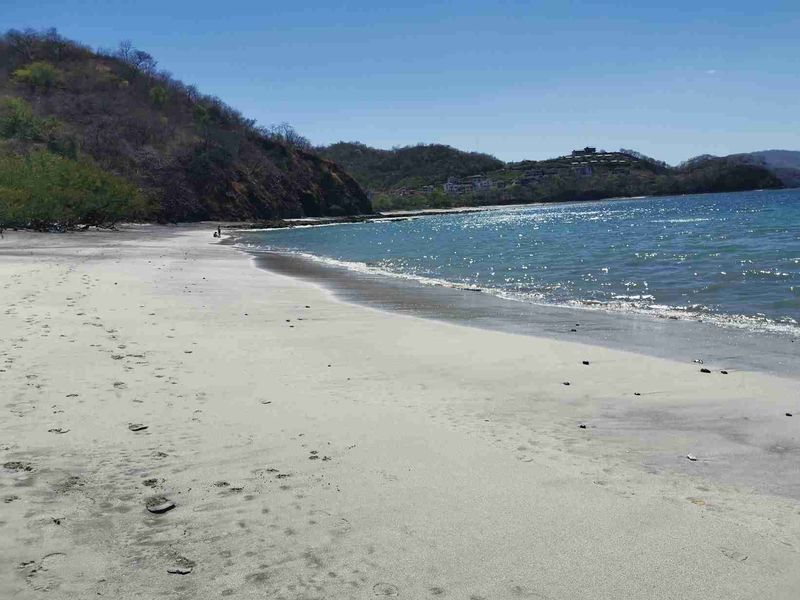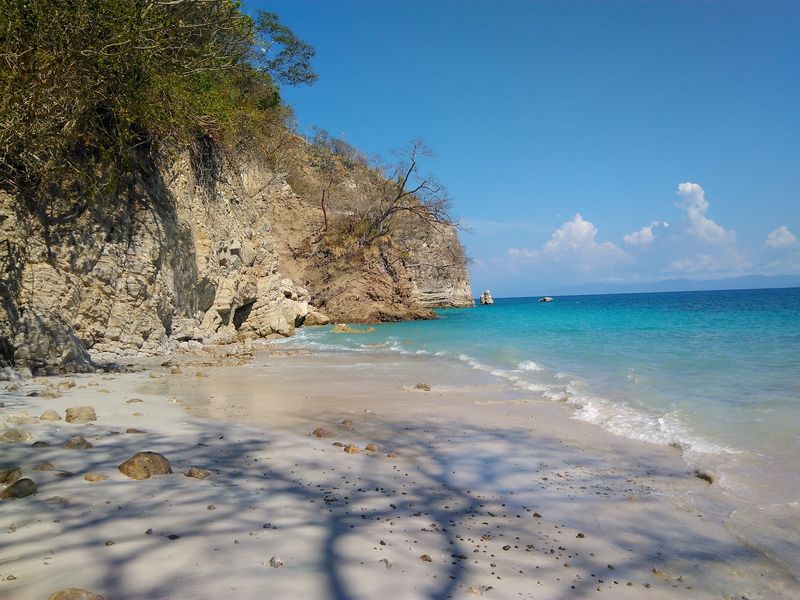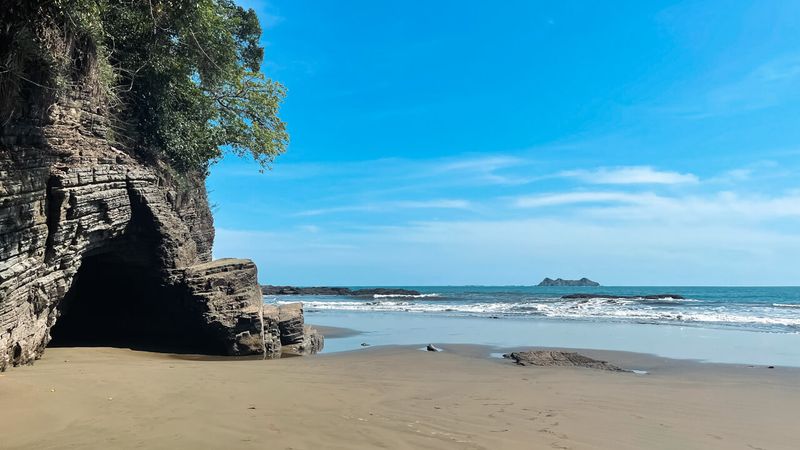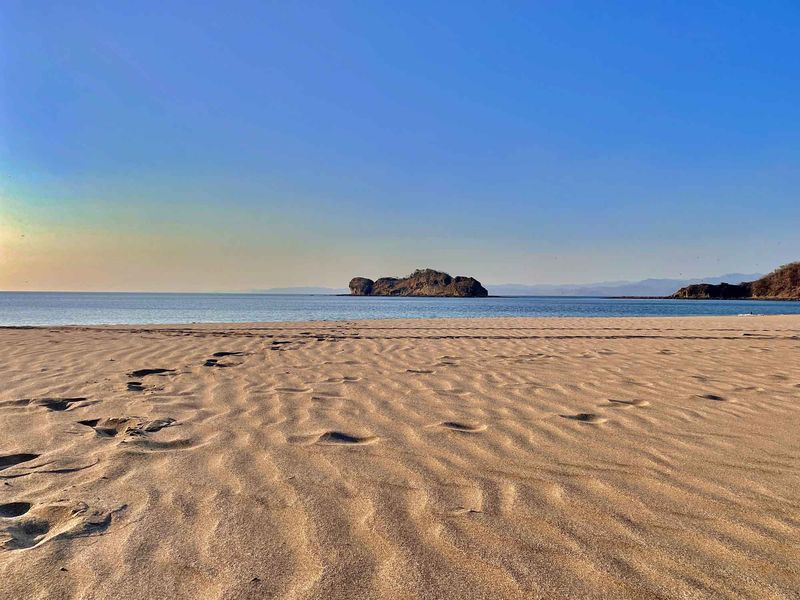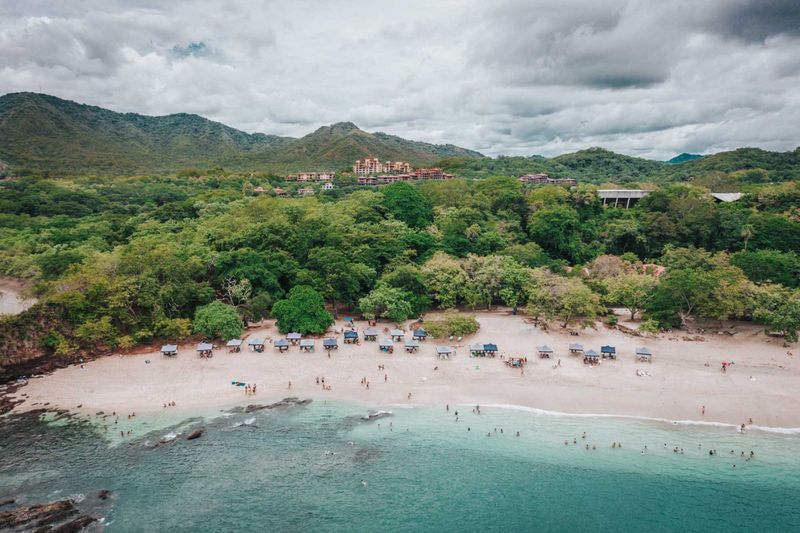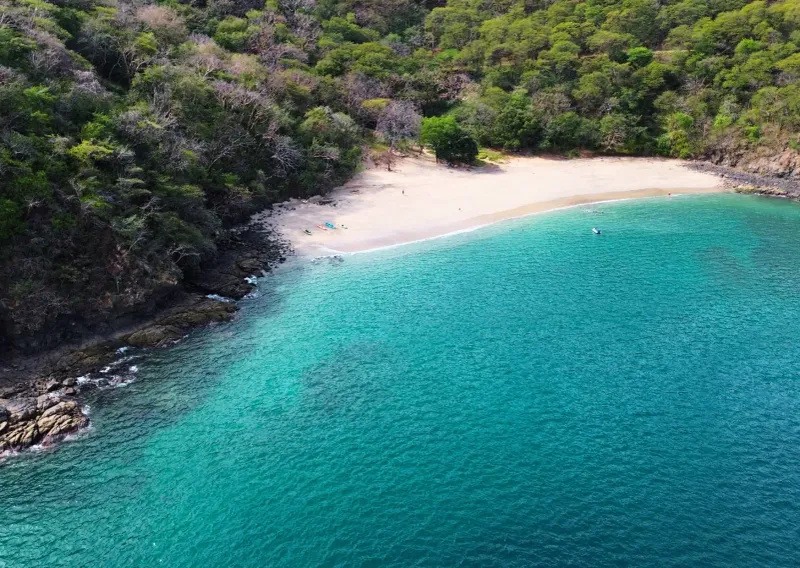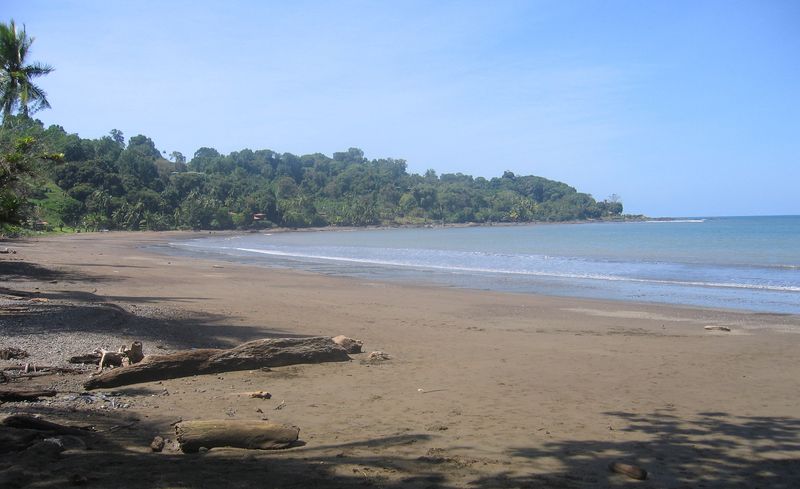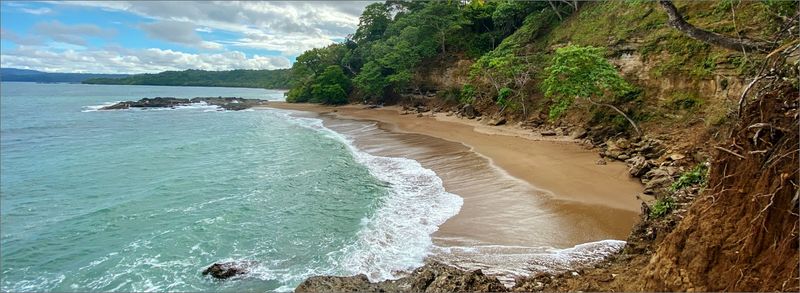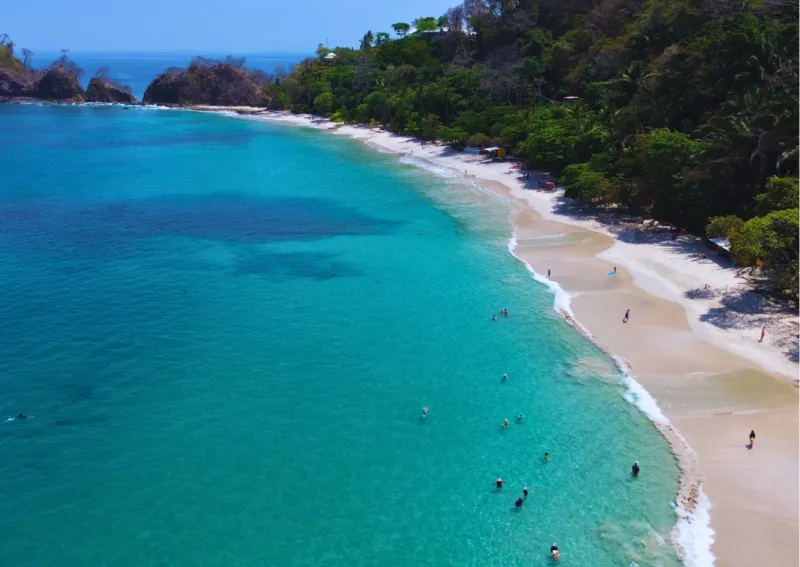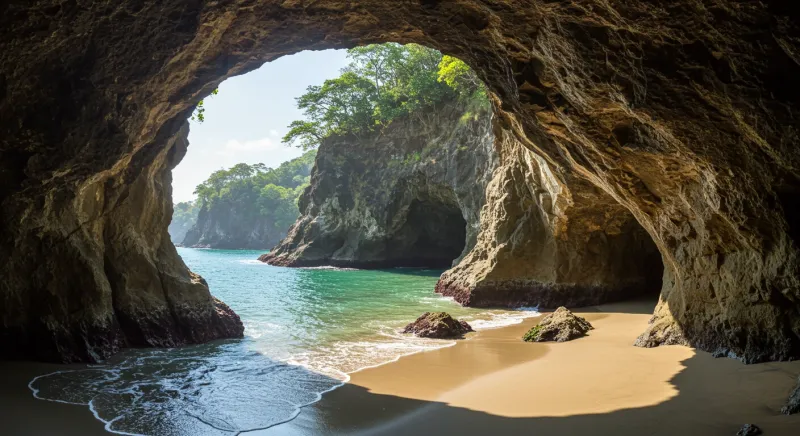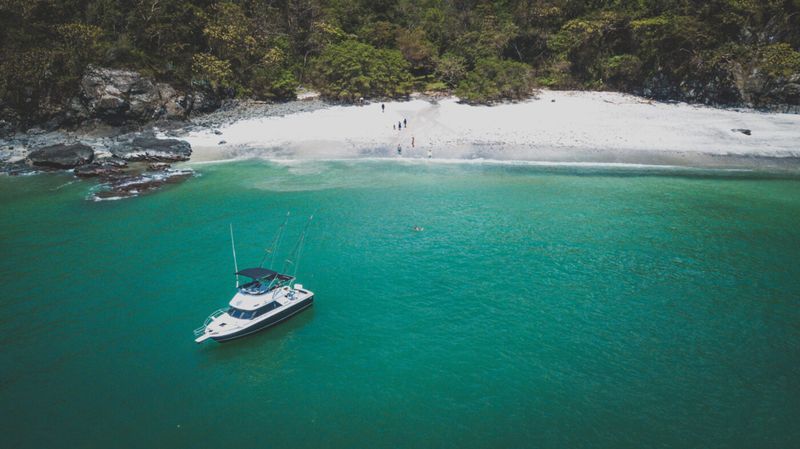Costa Rica’s coastline stretches over 800 miles, but most travelers flock to the same handful of famous beaches. Hidden between jungle headlands and tucked inside national parks, dozens of pristine coves remain wonderfully quiet – places where clear turquoise water meets soft sand and the only soundtrack is birdsong and waves. These twelve secret spots reward adventurous beachgoers with stunning beauty, peaceful solitude, and none of the crowds that pack the popular stretches.
1. Playa Biesanz (Manuel Antonio)
Squeezed between Quepos and Manuel Antonio National Park, Biesanz feels like a neighborhood secret. Monkeys chatter overhead while families wade into water so calm it barely ripples, making it ideal for younger swimmers and first-time snorkelers who want to spot parrotfish without battling surf.
A short trail leads down from the main road, keeping out the tour-bus crowds that swarm the national park beaches. Local vendors sometimes set up near the trailhead, offering fresh fruit and cold drinks.
Arrive early to claim shade under the almond trees, and keep an eye out for sloths draped across branches—they’re surprisingly common here in the late afternoon.
2. Playa Dantita (Las Catalinas, Guanacaste)
While big sister Playa Danta gets most of the attention from Las Catalinas visitors, little Dantita hides just a short hike away. This pocket cove wraps around you like a private hideaway, with water so clear you can count pebbles on the bottom from knee-deep.
The wild backdrop—untamed forest creeping right to the sand—gives Dantita an edge of adventure that the manicured town beach can’t match. Few people make the walk, so you might have the entire cove to yourself on weekdays.
Bring reef-safe sunscreen and a good book; there are no facilities here, just pure, unfiltered nature and the kind of silence that makes you forget your phone exists.
3. Playa Quesera (Curú Wildlife Refuge, Nicoya Peninsula)
Powder-white sand meets water so brilliantly aquamarine it looks Photoshopped—but Quesera is gloriously real. Tucked inside the Curú Wildlife Refuge, this beach rewards visitors who arrive by kayak or hike through the reserve with one of Costa Rica’s most Instagram-worthy shorelines.
The refuge protects the beach and surrounding forest, so wildlife sightings are common: howler monkeys, white-faced capuchins, and scarlet macaws are regular guests. Snorkeling here is excellent when conditions cooperate, with rocky points sheltering schools of colorful reef fish.
Access requires paying the refuge entrance fee, but that keeps crowds minimal and ensures the beach stays pristine and peaceful year-round.
4. Playa Arco (Uvita/Ojochal, Costa Ballena)
Hidden within Marino Ballena National Park, this crescent-shaped gem reveals its magic only to those willing to hike a short trail through the jungle. A tiny waterfall cascades onto the sand, and sea caves emerge from the rocks when the tide pulls back low enough to explore safely.
Because it requires a bit of effort to reach, Arco stays refreshingly quiet even during high season. The national park charges an entry fee and operates on set hours, so plan your visit accordingly.
Pack water shoes for the rocky patches and bring snorkel gear—the protected waters often offer surprisingly good visibility for spotting tropical fish around the cave entrances.
5. Playa Rajada (La Cruz, Salinas Bay)
Way up near the Nicaraguan border, Rajada curves along Salinas Bay in a gorgeous arc of pale sand and water that shifts from turquoise to sapphire depending on the light. Locals love this spot for weekend picnics, but tour buses never make it this far north.
The remoteness is part of the charm: reaching Rajada means committing to the drive, but you’re rewarded with elbow room and authenticity that vanished from Guanacaste’s southern beaches years ago. Swimming is safe when seas are calm, and the sunsets here are spectacular.
Bring everything you need—food, drinks, sunscreen—because services are minimal, and the nearest town is a drive away.
6. Playa Mina / “Minas” (north of Tamarindo)
Locals sometimes call it Playa Minas, and either way, this cove stays off most tourist radars thanks to a rough access road that scares off rental sedans. Those who brave the bumps find clear water, light crowds, and a wild, untamed vibe that feels worlds away from Tamarindo’s party scene just down the coast.
The beach itself is small but perfectly formed, with enough shade trees for a lazy afternoon and tide pools that reveal starfish and hermit crabs at low water. Surfing is possible on bigger swells, though most visitors come simply to swim and unwind.
Four-wheel drive is strongly recommended, especially in rainy season when the road turns to sticky mud.
7. Playa Calzón de Pobre (Gulf of Papagayo)
Nicknamed “Poor Man’s Underwear” (yes, really), this photogenic cove nestles among the Papagayo inlets where the water turns bathtub-calm when ocean swells settle down. The quirky name comes from the beach’s shape, and it’s become a badge of honor among travelers who find it.
Access is either by boat or via a rough dirt road that requires careful navigation and ideally a four-wheel-drive vehicle. Once you arrive, the reward is obvious: stunning scenery, excellent swimming, and the kind of solitude that luxury resorts charge thousands for.
Check tide and sea conditions before heading out, as rougher weather can make the water less inviting and the dirt road even trickier to navigate safely.
8. Playa San Josecito (near Drake Bay, Osa Peninsula)
San Josecito’s claim to fame is water so clear and calm it feels like snorkeling in an aquarium. Many visitors hike in along the scenic coastal path from Drake Bay, stopping to cool off in the crystalline shallows before continuing their jungle trek.
Rocky outcrops at either end of the beach create natural snorkeling zones where tropical fish dart between coral formations. The sheltered position protects San Josecito from big swells, making it swimmable even when nearby beaches turn rough and choppy.
Drake Bay itself is remote and requires planning to reach, which keeps this entire stretch of coastline wonderfully uncrowded. Pack snorkel gear and underwater camera—you’ll want to capture the marine life here.
9. Playa Cocalito & El Chorro Waterfall (Montezuma)
Imagine a waterfall tumbling straight into the ocean—that’s the rare sight waiting at Playa Cocalito’s north end. El Chorro waterfall creates a freshwater shower on the beach, offering a surreal experience you won’t find at many coastal spots anywhere in the world.
Reaching Cocalito requires a hike, horseback ride, or boat tour from Montezuma or Tambor, which keeps the crowds manageable. The beach itself stretches long and quiet, perfect for walking and beachcombing when you’re done marveling at the waterfall.
Time your visit carefully: come for the scenery and swimming rather than surfing, as the waves here are typically mellow. Low tide reveals the most dramatic waterfall views and easiest beach access.
10. Playa Blanca (Punta Leona, near Jacó)
Playa Blanca lives up to its name with genuinely white sand that contrasts beautifully against turquoise water and jungle-green hillsides. Located beside Playa Mantas at the Punta Leona resort area, this cove has faced some public-access debates over the years.
If you’re not staying at the resort, the typical approach is parking near Playa Mantas and walking in along a rocks-and-forest path that takes about ten minutes. Local authorities have scrutinized access rules, so it’s wise to check current regulations before making the trip.
The beach itself is small but spectacular, with calm water ideal for swimming and snorkeling when conditions are right. Arrive early to secure a shady spot under the palms and enjoy this slice of paradise before day-trippers arrive.
11. Playa Ventanas (Ojochal, Costa Ballena)
Two sea caves puncture the rock formations here, creating natural “windows” that frame the ocean beyond—hence the name Ventanas. You can walk through these caves, but only at low tide when it’s safe; high tide fills them with rushing water that’s dangerous to navigate.
A creek crosses the beach access road, so check water levels before driving through, especially during rainy season. Simple services cluster near the entrance, offering parking and basic refreshments for beachgoers.
The palm-backed shoreline provides natural shade for relaxing between cave explorations. Bring a tide chart or check online before visiting so you can time your cave adventure perfectly and safely explore these geological wonders.
12. Playa Nacascolo (Papagayo Peninsula)
Nacascolo stretches along Culebra Gulf in a long, tranquil bay where the water stays bath-calm most days—perfect for low-key swimming and wildlife spotting along the forested edges. Howler monkeys and iguanas are common sights, and bird life is abundant in the dry tropical forest backdrop.
Public access exists via the peninsula road and walking paths, though some sources mention resort shuttles or day-pass arrangements depending on current access agreements. It’s smart to verify the latest access rules on the day you plan to visit.
The peaceful atmosphere and gentle water make Nacascolo ideal for families with small children or anyone seeking relaxation over adventure. Pack binoculars for wildlife watching and plenty of water for the walk in.
